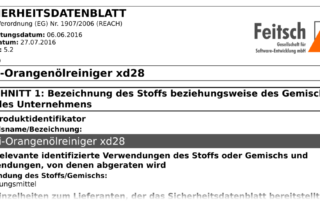What is log Pow? The O/W partition coefficient in SDSs
In Section 12 of the safety data sheets, you can frequently encounter phrases such as "log Kow", "log Pow" or "log pOW” in connection with the bioaccumulation potential. What is behind these values? Which ones are used and when? What are the implications of these values for the bioaccumulation potential? Definition "log Kow" is a






